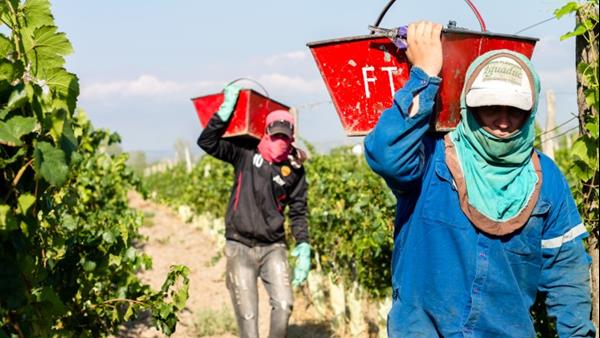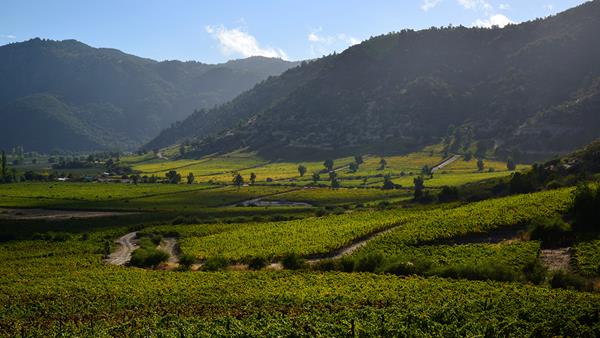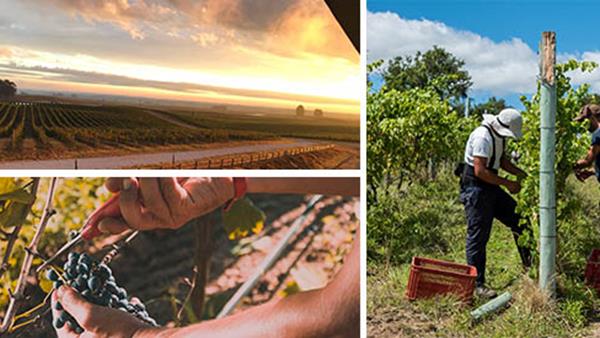Harvest 2018: Argentina
Reports from our producers across Argentina are very positive this year, with some hailing it the best in a decade. We are seeing particularly exciting quality in the Malbec and Cabernet Sauvignon.
“Argentina has had a very good harvest from a volume perspective and the quality looks outstanding this year, although stock volumes are still limited,” says Bibendum buyer for Argentina, Paul Meihuizen. “Grape maturity, ripeness, sugars and tannins are all in line with a fantastic-quality year.”
Argento, Mendoza
Harvest volumes were higher than average for Argento, aside from a few areas that were damaged by hail storms. Mendoza experienced an extremely dry and hot start to the year, leading to an early harvest.
“The 2018 vintage is potentially one of the best in a decade and promises great wines,” says winemaker Silvia Corti. “This, thanks to normal production volumes and good expression and quality of fruit, combined with good acidity overall and great anthocyanin and tannin levels. This combination should afford the wines good ageing potential.
“Our white wines show typical intense tropical aromas, and vegetal notes are generally not present this year. Slightly higher alcohol and fresh natural acidity are characteristic of the 2018 whites.
“Reds from the East and Central valley in Mendoza are presenting an unusually-deep colour and nice fruitiness; they are characterised by high glycerine and silky tannins. The Uco Valley shows great concentration because of low yields and, so far, great ageing potential.”
Catena, Mendoza
A warm summer was followed by a cool harvest period at Catena, with lower rainfall than 2017 allowing optimal fruit balance. The winemaking team have reported beautiful natural acidity, regional aromatic expression and smooth tannins in this year’s wines.
“We call 2018 ‘El Año Mendocino,’ or the Mendoza Year,” says owner and winemaker Dr Laura Catena. “After a small, cool vintage in 2017, which we called ‘El Año Bordelés’ (the Bordeaux Year) and a small, very cool and rainy year in 2016 ‘El Año Bourguignon’ (the Burgundian year), this year we finally got a vintage that is classically Mendozan: dry, cool, sunny and with moderate yields in every region, from the lowest to the highest altitudes.”
Adrianna Vineyard (Gualtallary, Tupungato Alto, Western Uco Valley)
Spring frost reduced yields by about 20% here, but most of the harvest was saved by turning on anti-frost cans. “A few all-nighters were pulled in November,” says Laura. “A nice dose of goat and sheep dung and worm compost kept the organically-farmed Adrianna Vineyard happy throughout the growing season. The Catena Institute’s first year of microbial population study of the Fortuna and Mundus parcels showed a diverse and healthy population of microbes, different for each site. In three years we will hopefully have enough information to start understanding how microbial biodiversity and populations affect plant wellbeing and Malbec flavours.”
Nicasia Vineyard (Paraje Altamira, Southern Uco Valley)
The frosts that affected the Uco Valley (West towards Tupungato and Gualtallary (Adrianna) and South towards Paraje Altamira) strongly affected the Nicasia Vineyard as well. Fortunately, the vineyard was saved by anti-frost fires that were lit throughout the night to protect the vines. The diurnal range was particularly marked during the harvest months, leading to a fresh Malbec with very dark and intense black fruit on the nose and palate.
La Posta, Mendoza
The summer of 2017 started out warm for La Posta’s growers, but then cooled off during the 2018 harvest months of February, March and April. There was a decrease of about 100 mm of rain, equating to around 30% less rain in every region. This, in addition to the lower rainfall and a high diurnal range during the harvest months, gave rise to optimal balance in the fruit, with beautiful natural acidity, regional aromatic expression and smooth tannins.
Pasarisa, Various regions
Salta
After a poor harvest in 2016, the 2018 harvest in Salta was more typical for Salta or Cafayate wines. It started with a cold spring, meaning all the clusters were loose, with a good bud break and fruit set. The summer was a little colder than average with little rain during January, but during February and March the temperatures rose enough to allow good ripening of all the grapes. The Torrontes was handpicked nearly two weeks earlier than usual. The wines are showing good natural acidity this year with lower pH and fresh, fruity characteristics.
Patagonia
The 2018 harvest season started with a cold and windy spring in Patagonia, with good bud break and fruit set. Warmer temperatures during January and February brought ripening forward up to three weeks in order to preserve the natural acidity and freshness of the wines.




